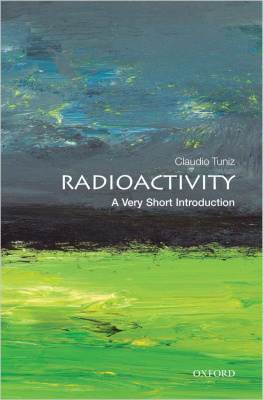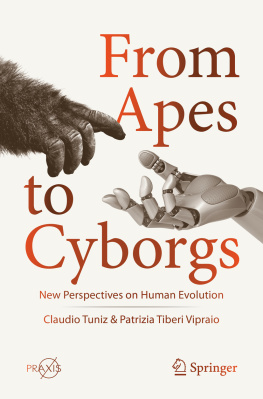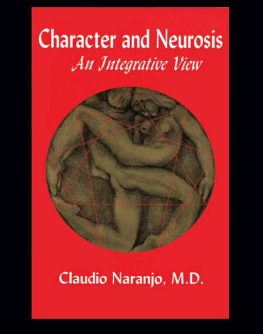The Science of Human Origins
The Science of Human Origins
Claudio Tuniz, Giorgio Manzi & David Caramelli
First published 2014 by Left Coast Press, Inc.
Published 2016 by Routledge
2 Park Square, Milton Park, Abingdon, Oxon OX14 4RN
711 Third Avenue, New York, NY 10017, USA
Routledge is an imprint of the Taylor & Francis Group, an informa business
Copyright 2014 Gius. Laterza & Figli
All rights reserved. No part of this book may be reprinted or reproduced or utilised in any form or by any electronic, mechanical, or other means, now known or hereafter invented, including photocopying and recording, or in any information storage or retrieval system, without permission in writing from the publishers.
Notice:
Product or corporate names may be trademarks or registered trademarks, and are used only for identification and explanation without intent to infringe.
Library of Congress Cataloging-in-Publication Data:
Tuniz, C. (Claudio)
[Scienza delle nostre origini. English]
Science of human origins / Claudio Tuniz, Giorgio Manzi, and David Caramelli.
pages cm
Summary: Our understanding of human origins has been revolutionized by new discoveries in the past two decades. In this book, three leading paleoanthropologists and physical scientists illuminate, in friendly, accessible language, the amazing findings behind the latest theories. They describe new scientific and technical tools for dating, dna analysis, remote survey, and paleoenvironmental assessment that enabled recent breakthroughs in research. They also explain the early development of the modern human cortex, the evolution of symbolic language and complex tools, and our strange cousins from Flores and Denisova.Provided by publisher.
Includes bibliographical references and index.
ISBN 978-1-61132-971-1 (hardback)ISBN 978-1-61132-972-8 (paperback)ISBN 978-61132-973-5 (institutional eBook)
1. Paleoanthropology. 2. Human evolution. 3. Fossil hominids. I. Manzi, Giorgio. II. Caramelli, David. III. Title.
GN281.T8513 2013
569.9DC23
2013041025
Published in Italian as La scienza delle nostre origini, Rome: Editor! Laterza, ISBN 9788858106716 Translation revised by Peter Mcgrath, The World Academy of Sciences, Trieste, Italy
ISBN 978-1-61132-971-1 hardcover
ISBN 978-1-61132-972-8 paperback
Cover design by Jane Burton
Cover image: CT scan of Neanderthal skull by Fabio Di Vincenzo ( Giuseppe Sergi Anthropology Museum)
Contents
Extinct hominin species described on the basis of the fossil record.
Evolution of the genus Homo over a geographical context including the main continental areas.
Time intervals covered by dating methods used in paleoanthropology.
Miniaturized AMS system (250 kV) for radiocarbon analysis.
Calibration curve to convert radiocarbon ages into calendar ages.
Sea level changes over the past 140 KYA.
Correlation between stratigraphic, paleomagnetic, and paleo-climatic records during the Quaternary.
Schematic drawing of a portable microCT system.
Reconstruction of the cranium MH1 of A. sediba, based on digital data obtained with microCT.
Juvenile Neanderthal mandible from Molare (Italy).
Tree of genetic diversity (mtDNA) as proposed by Cann, Stoneking, and Wilson in 1987.
Dispersal of modern humans according to genetic and archaeological evidence.
Ancient DNA represented by the most famous Italian poem (Dante alighieri, La divina commedia).
Comparison between complete mitocondrial genomes of H. sapiens, H. neanderthalensis, and Denisovans.

Physical sciences have recently intensified their incursions into the study of human origins, thus going far beyond their traditional focus on the origins of matter and of the universe. Human evolution research fuels heated debates with philosophers and theologians, as it raises a number of questions at the margins of science. What does it mean to be human? What are the cognitive boundaries between us and other now extinct human species? What are the philosophical and ethical implications of the former coexistence of different human species? Are religious and ethical attitudes the product of cultural or rather biological evolution?
This book will focus on the new scientific evidence available to reconstruct the story of our evolution. Thanks to physics but also to genetics and other disciplines, paleoanthropologythe science of human originshas moved from a descriptive to a quantitative approach. As an introduction to the discussion to follow, presents the advanced nuclear chronometers that can measure the pace of human evolution with increasing accuracy. They help us determine when we acquired our modern anatomy and when we developed a fully modern behavior, which includes the use of complex language and symbolic representation. They confirm that several species of Homo have coexisted for tens of thousands of years in the past, with possible different behavioral traits.
There are, of course, huge gaps in our understanding of the selective mechanisms that led to the evolution of the bipedal apes, and later of the human genus; but there is no doubt that they are related to the environment in which these species lived, ate, and multiplied. Unfortunately data on climate change over time and space are not sufficiently robust to test hypotheses relating human evolution to exogenous factors. In we discuss new research programs on past environmental conditions based on the analysis of isotopic abundances and other climate indicators in sediments, stalactites, and Antarctic ice sheets. Such programs should be complemented by the identification of new sites with ancient human remains. To this aim, a systematic use of remote sensing techniques, through satellites, space shuttles, airborne scanners, and ground-penetrating radars, could expose unexplored areas of interest.
introduces virtual paleoanthropology: the non-invasive X-ray 3D imaging of fossil remains. This method allows scientists, for example, to reconstruct the brain structure of archaic humans and proto-humans with great precision. The European Synchrotron Radiation Facility in Grenoble recently used this technique to analyze a new species of South African Australopithecus, showing that the reorganization of the brain started with this bipedal creature, even though the volume of its brain was more similar to that of an ape. Scientists can thus infer new details on the evolution that led to the development of the brain (and subsequently the mind) in modern humans.
discusses the application of these methods to decode the nuclear genome of Neanderthals and of previously unknown humans recently discovered in Siberia. This research aims to identify genes that express our biological nature, including our cognitive and behavioral characteristics.
Finally, a list of notes and a glossary will help the reader with more details on the scientific rationale, methods, and techniques discussed in the book.















